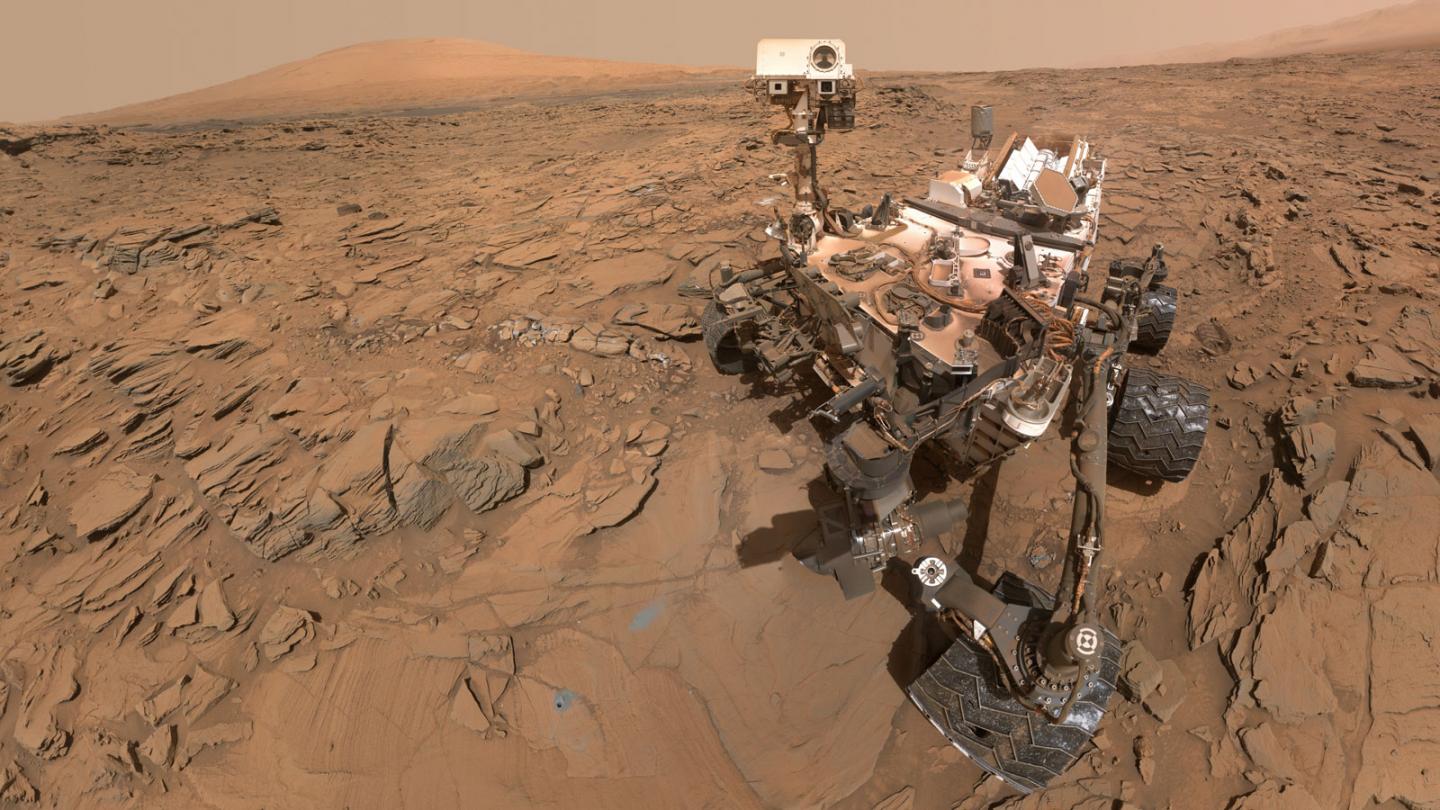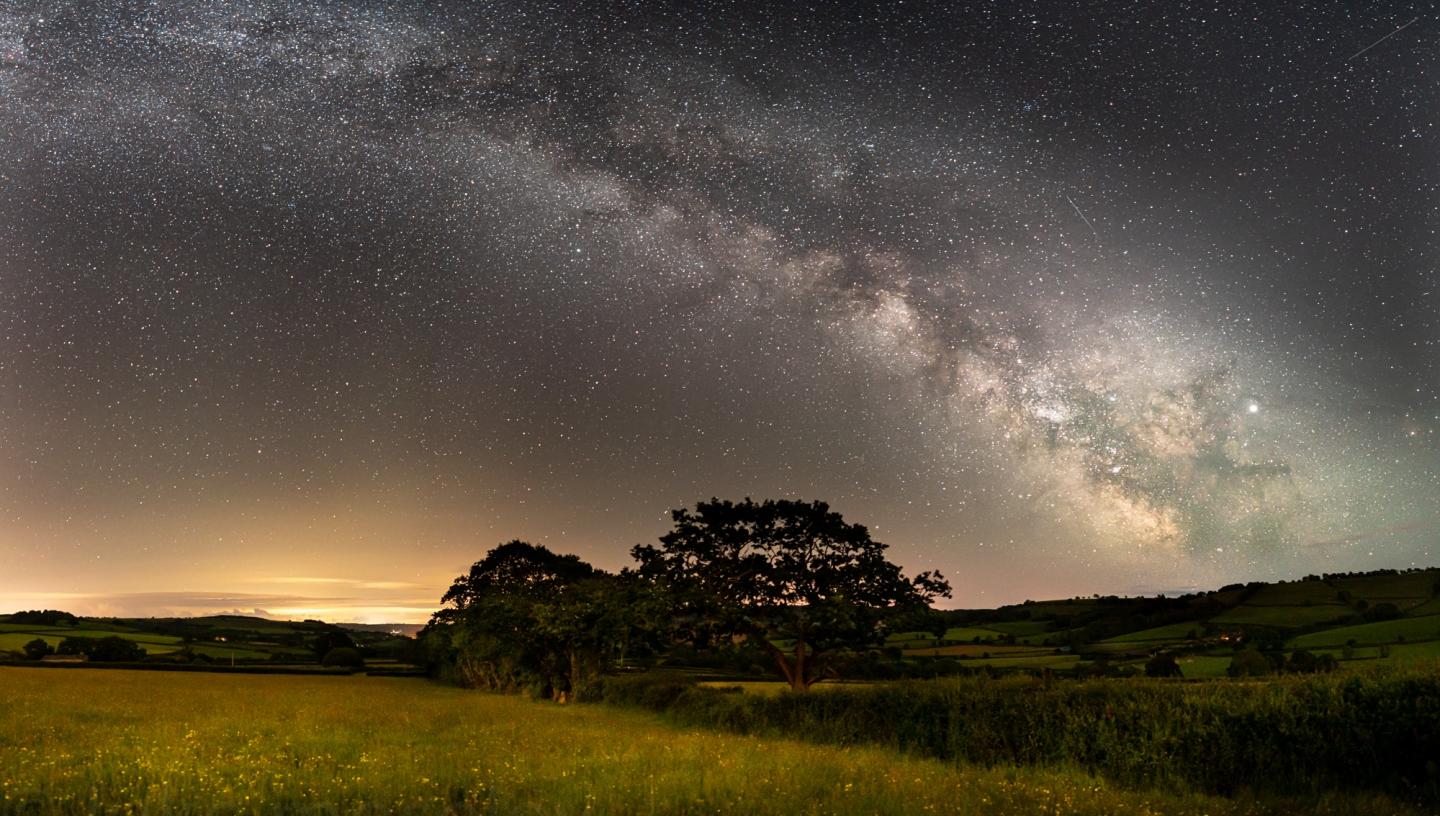
Essential Information
| Location |
Royal Observatory
|
|---|---|
29 Aug 2019
Discover what to see in the night sky during September 2019, including the Andromeda Galaxy.
By Patricia Skelton, Astronomy Education Officer
(Details given are for London and may vary for other parts of the UK)
Top 3 things to see in the night sky in September
- Throughout the month: Spot the Andromeda Galaxy in the night sky.
- 9 September: Have a look at Neptune which reaches opposition on this day.
- 14 September: Enjoy this month's full Moon which is also known as the Harvest Moon.
Look Up! Podcast
Subscribe and listen to the Royal Observatory Greenwich podcast. As well as taking you through what to see in the night sky each month, Royal Observatory Greenwich astronomers pick their favourite astro news story. For September they're chatting about the 30th anniversary of Voyager 2's flyby of Neptune, and they talk about an anaemic star - a star with the lowest ever measured abundance of iron. Have a listen below then vote for your favourite news story on our Twitter poll during the first week of the month.
Our podcast is also available on iTunes here.
Astronomy in September 2019: key events and what to see
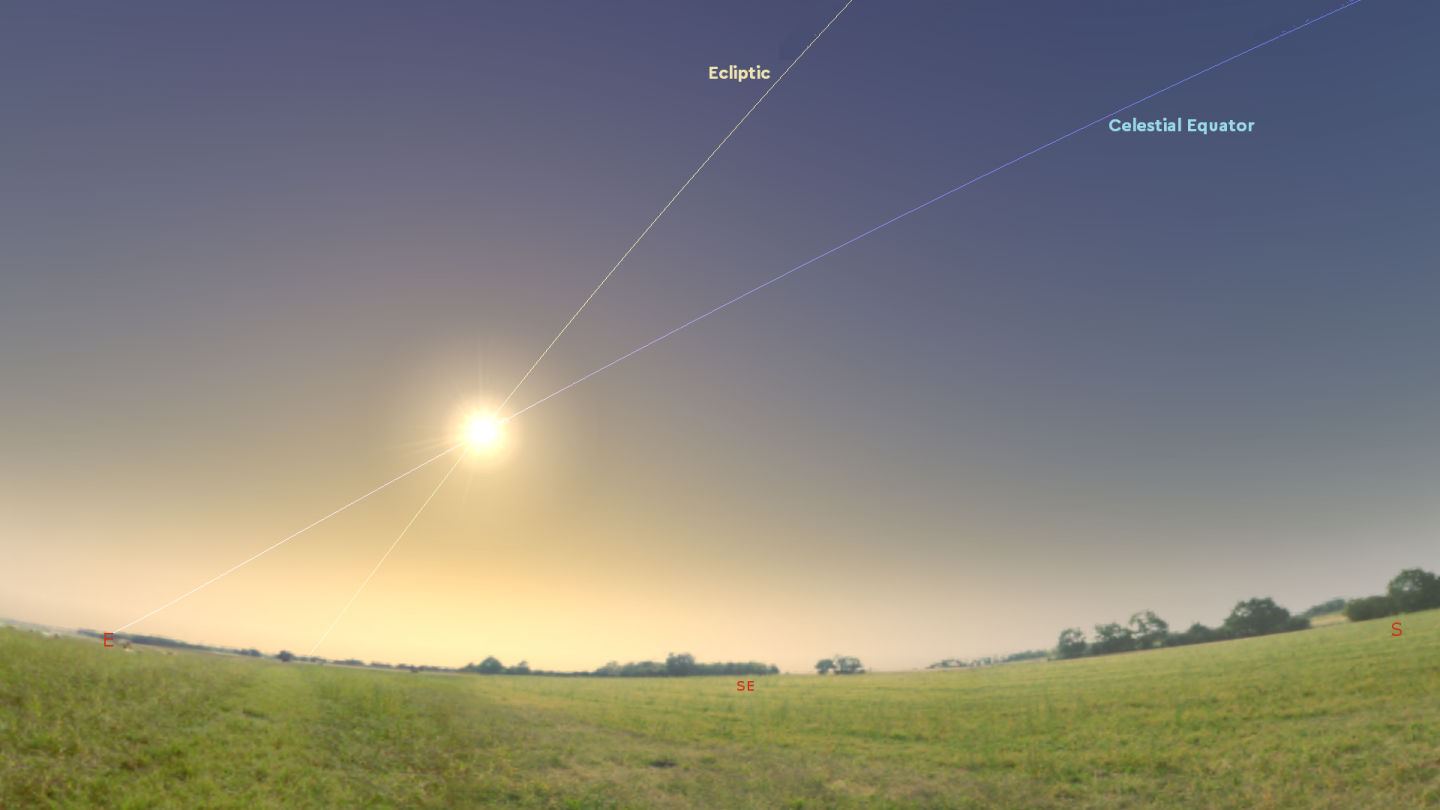
The days are getting shorter and the nights longer here in the northern hemisphere as we head towards the end of the year. This is made all the clearer as this month is home to the September equinox, the time of year when the daylight and nighttime portions of the day are of equal length.
But what exactly is happening on this day to make it special? It’s all because of the intersection of two imaginary lines in the sky.
One is the celestial equator, the projection of the Earth’s equator out onto the sky. The other is the ecliptic, the apparent path of the Sun against the stars as the Earth orbits around it. On an equinox, the Sun’s position on the ecliptic coincides with the celestial equator. This time, the Sun is moving from being slightly north of the equator to being slightly south of it; in other words, passing summer from the northern hemisphere to the southern one. So expect longer nights and colder temperatures in the north before too long!
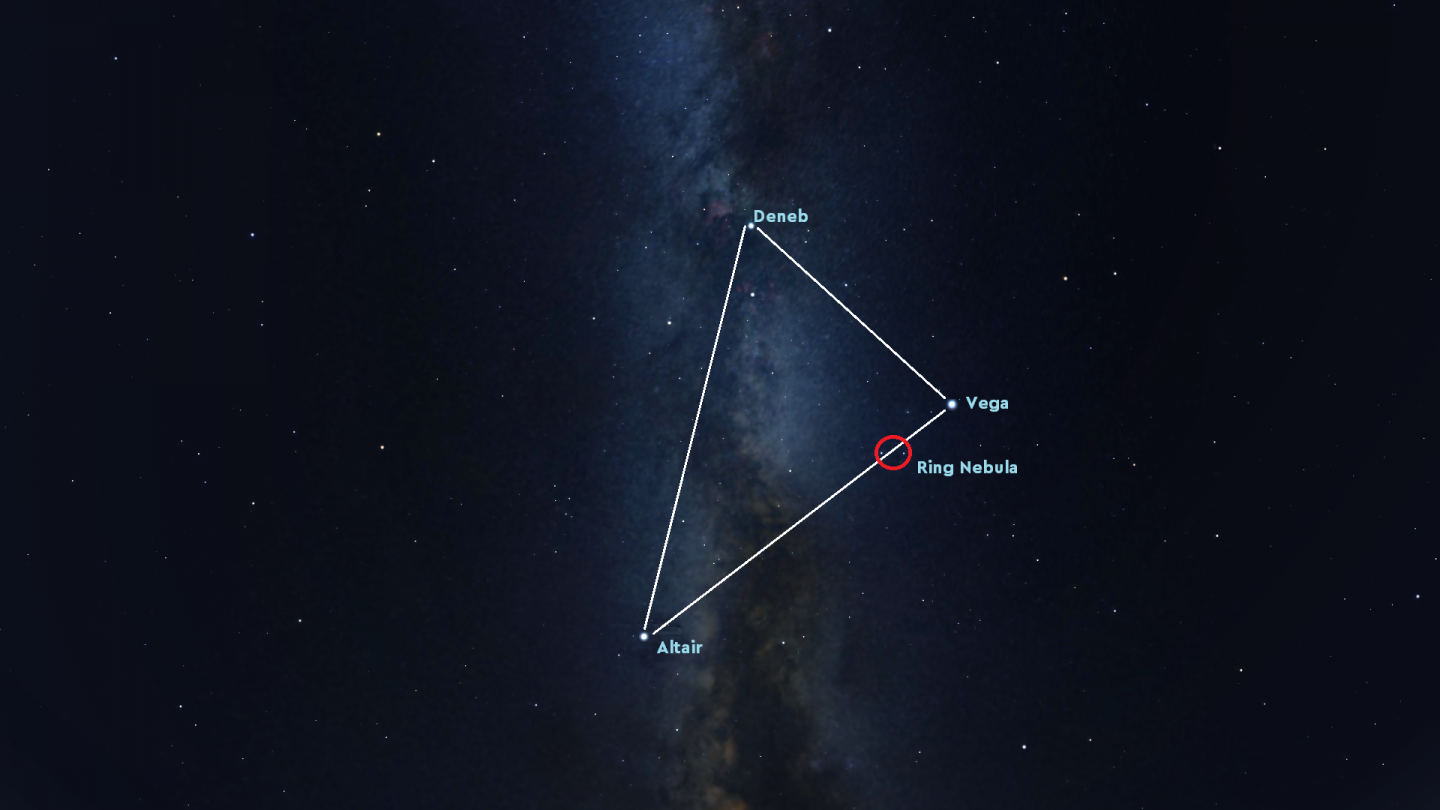
The darker nights will help make spotting deep sky objects all the easier. The Summer Triangle remains high in the sky through much of the night. This trio of stars, Altair from the constellation Aquila, Vega in Lyra and Deneb in Cygnus, marks an interesting area for finding astronomical objects.
One particular gem is the Ring Nebula, just underneath the bright star Vega. While invisible to the unaided eye, a pair of binoculars will show a faint smudge of light, while a small telescope will begin to pull out the ring of gas for which it is named.
These are the outer layers of a dead star, originally similar in mass to our own Sun. In fact, this faint cloud is a reasonable example of what our own solar system may look like long after our Sun has reached the end of its life in 5 or 6 billion years.
The Summer Triangle also surrounds the brightest part of the Milky Way, our own galaxy, visible from the northern hemisphere. Look for a pale trail of light crossing the entire sky. At midnight this line will run almost directly overhead from north to south.
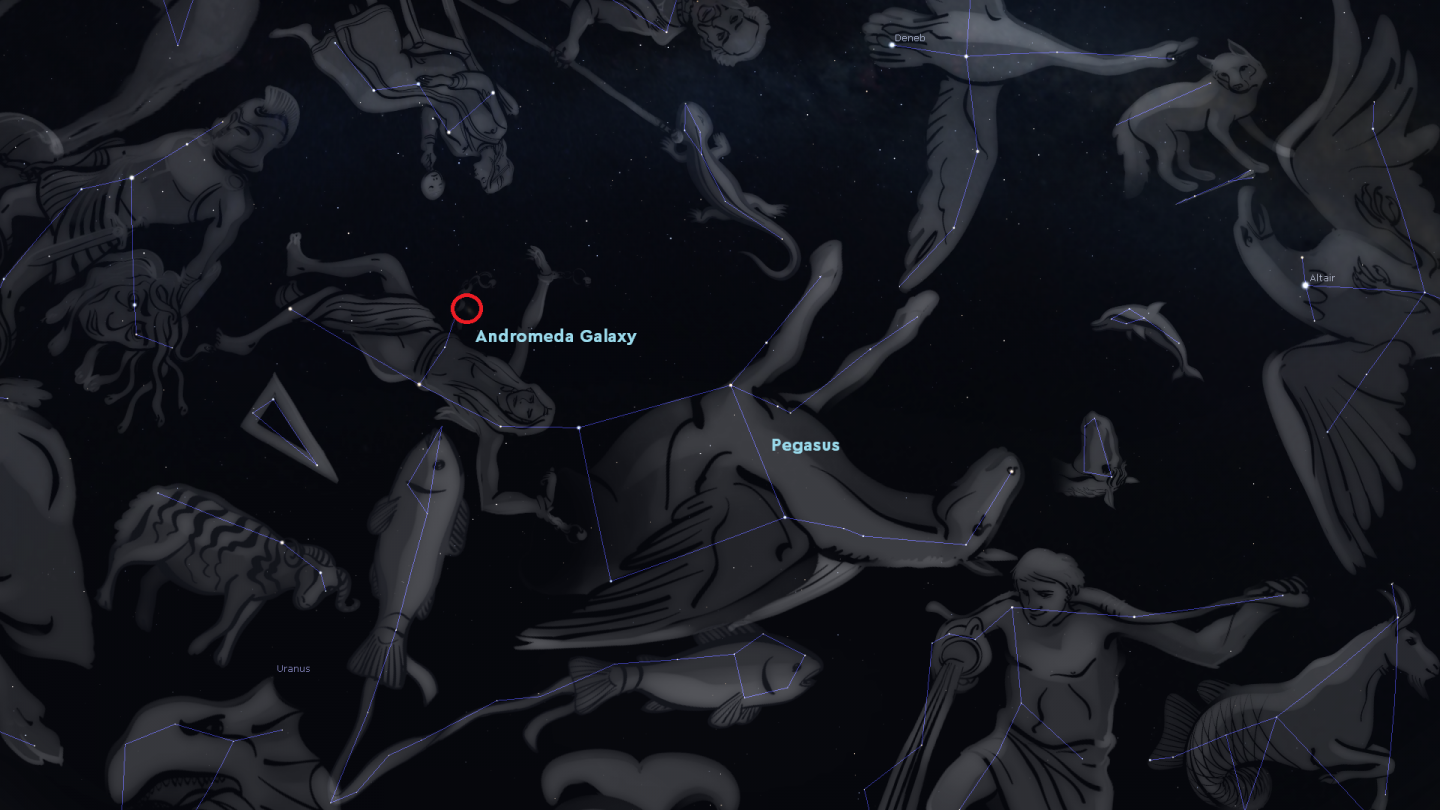
For a real test of your eyesight, there is another pale smudge of light that marks the most distant object visible to the unaided eye.
Look to the East, anticlockwise of the Great Square of Pegasus, the winged horse constellation, to find a faint blob often most easily visible in your peripheral vision. This is the core of the Andromeda Galaxy, 2.5 million lightyears from Earth, meaning you are seeing it as it was well before modern humans walked the planet. If your eyes were sensitive enough to see its faint outer regions, the vast galaxy would span a region several times larger than the full Moon.
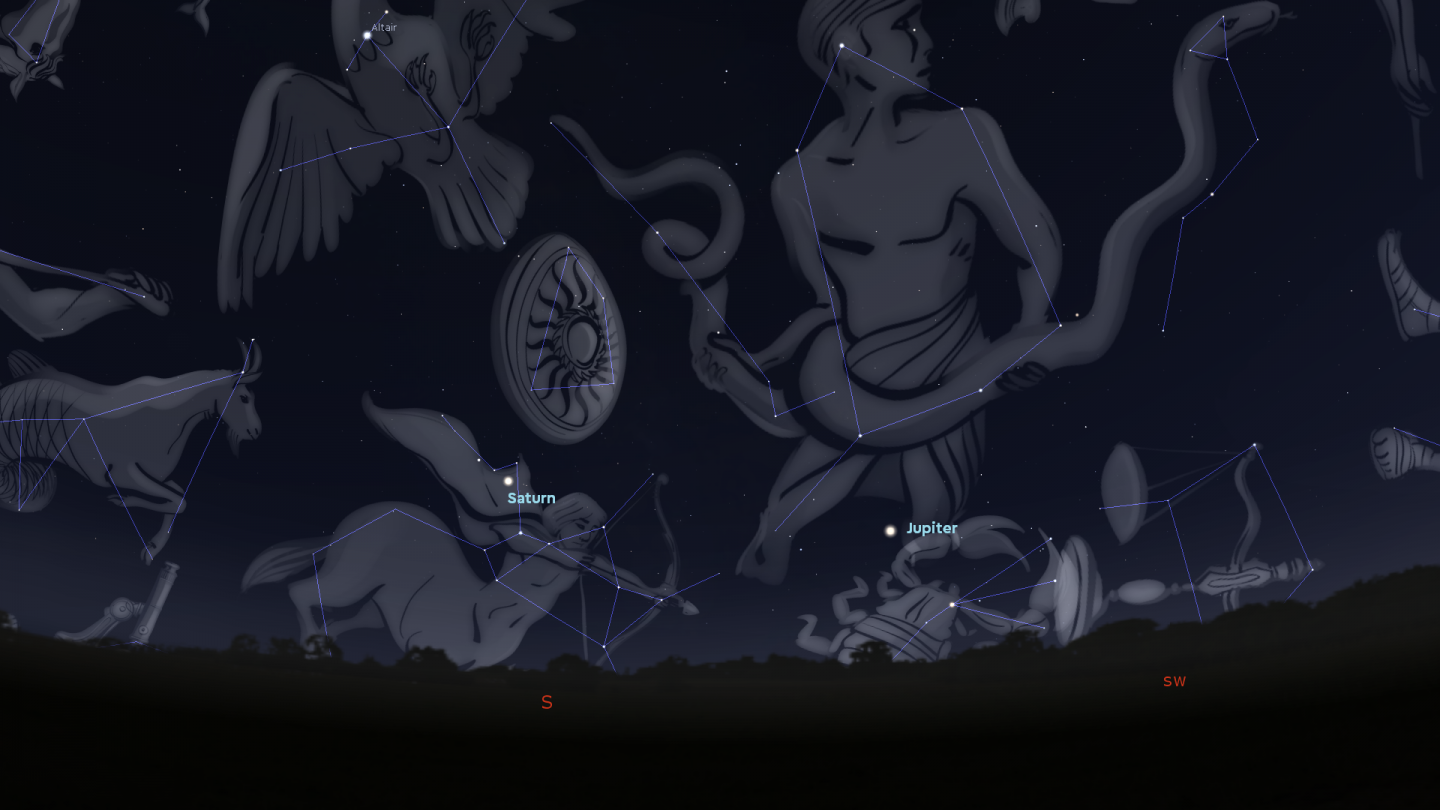
These longer nights will give far more time to observe the night sky. This month’s array of planets remains limited to the gas giants in our Solar System, with the rocky inner planets Mercury, Venus and Mars all still too close to the Sun in the sky to observe safely and easily.
Jupiter will still be above the horizon in the early evening, but will be setting earlier each night, from around 11pm at the beginning of the month to around 9:30pm towards the end.
Saturn, with its striking ring system, will be visible until around midnight.
9 September: Neptune at opposition
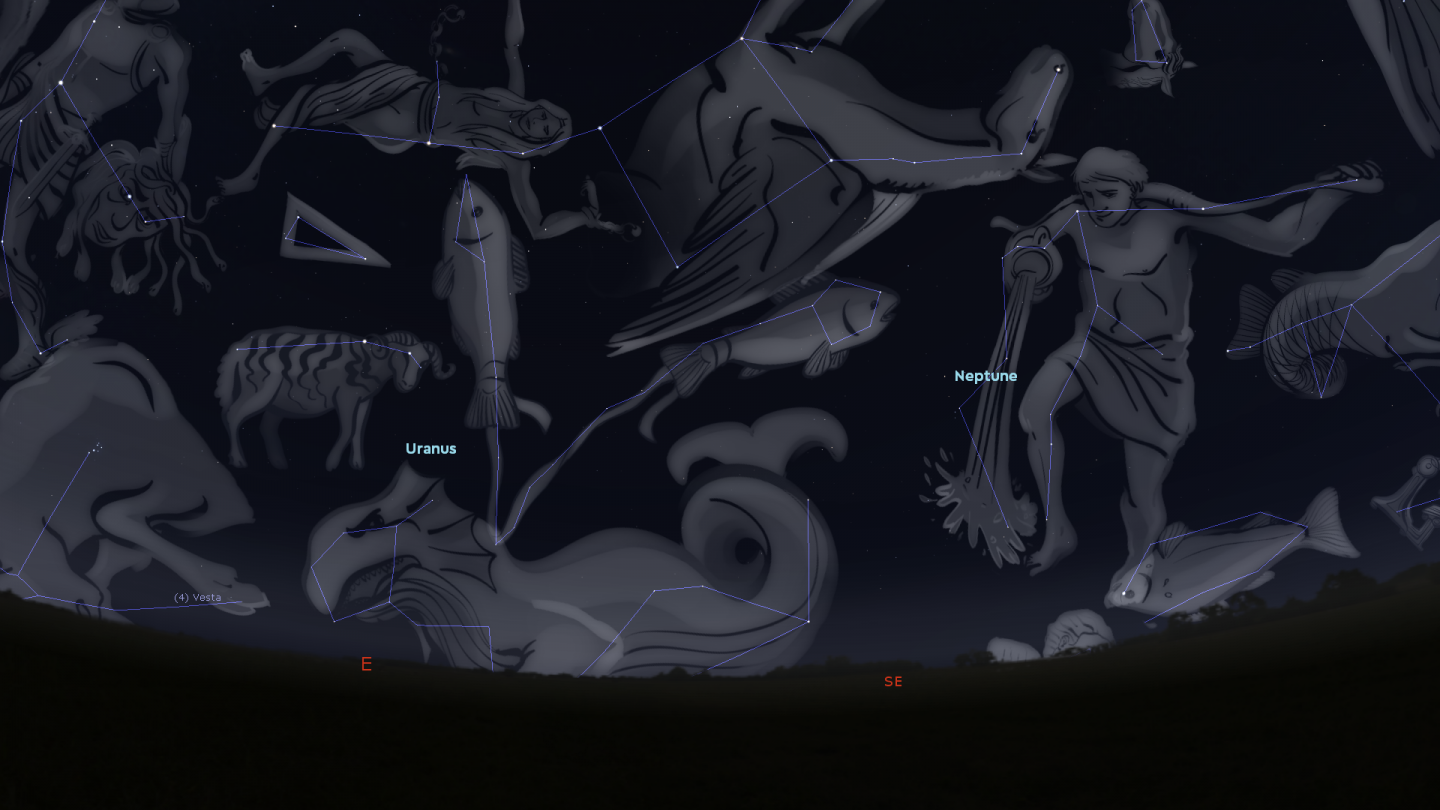
Uranus will be around for much of the night this month while Neptune will be in the best place for observation, reaching opposition on the 9th and making it as close and bright as this pale, distant planet ever gets. Coincidentally, only late last month was the 30th anniversary of Voyager 2’s flyby of the planet, currently the only time this vast ice giant has been visited by spacecraft from Earth.
Find out more about planets at opposition in the video below.
14 September: Harvest Moon
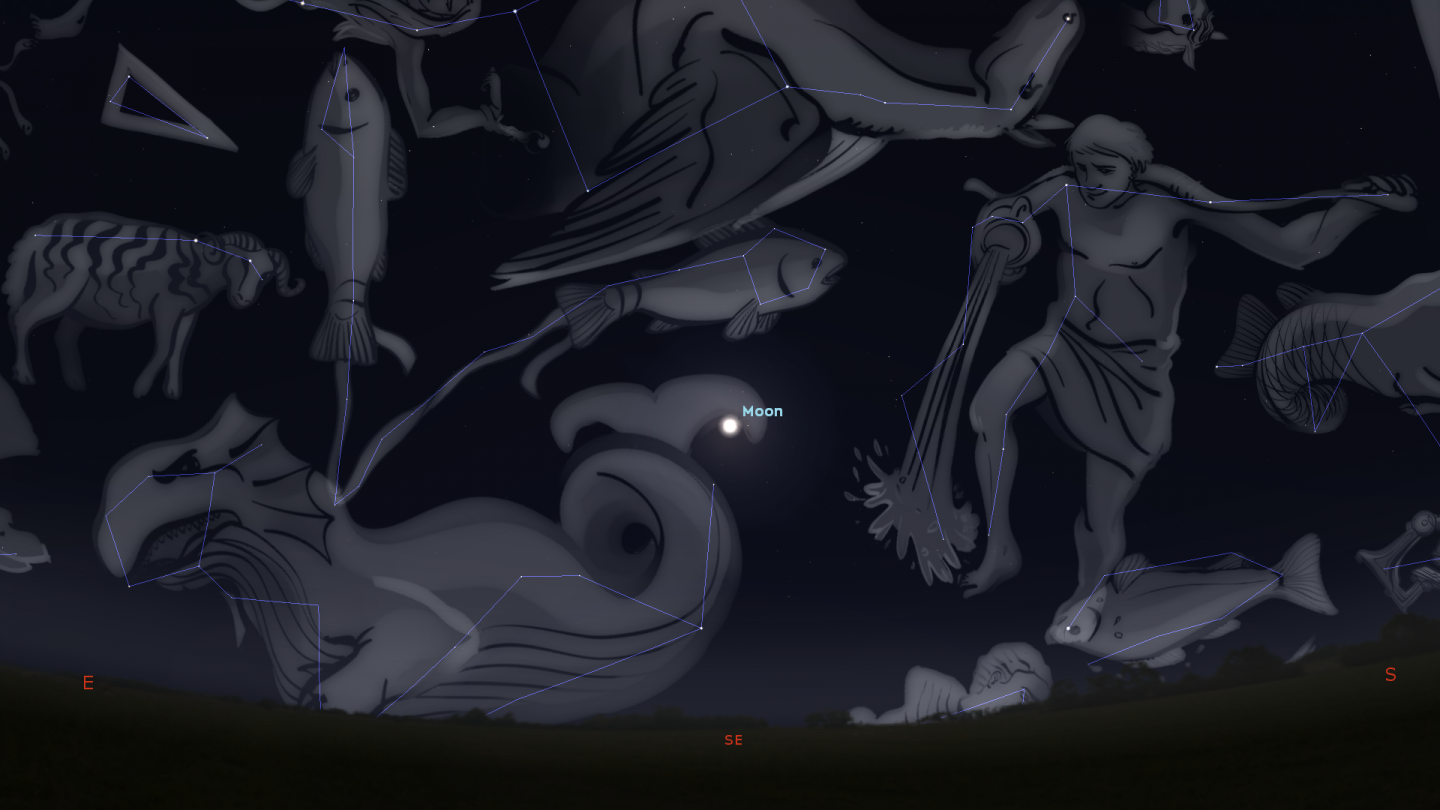
This month, the Moon begins in a thin crescent phase. 31 August will have been, for much of the Earth’s surface, the first night that the crescent can be seen with the unaided eye, known as the New Crescent Moon. The Islamic calendar, which works primarily off of the sighting of this thin crescent, begins its new year on the following day, making 1 September Al Hijra, the first day of the Islamic calendar for much of the world.
As the calendar is based on the lunar cycle, which does not fit exactly into the more common solar calendar, Al Hijra moves back about 10 days each year. This month’s full Moon, sometimes known as the Harvest Moon or Corn Moon due to its approximate coincidence with the year’s harvests, will occur on the 14th, and will be followed two weeks later by a new Moon on the 28th.
The Moon's phases this month
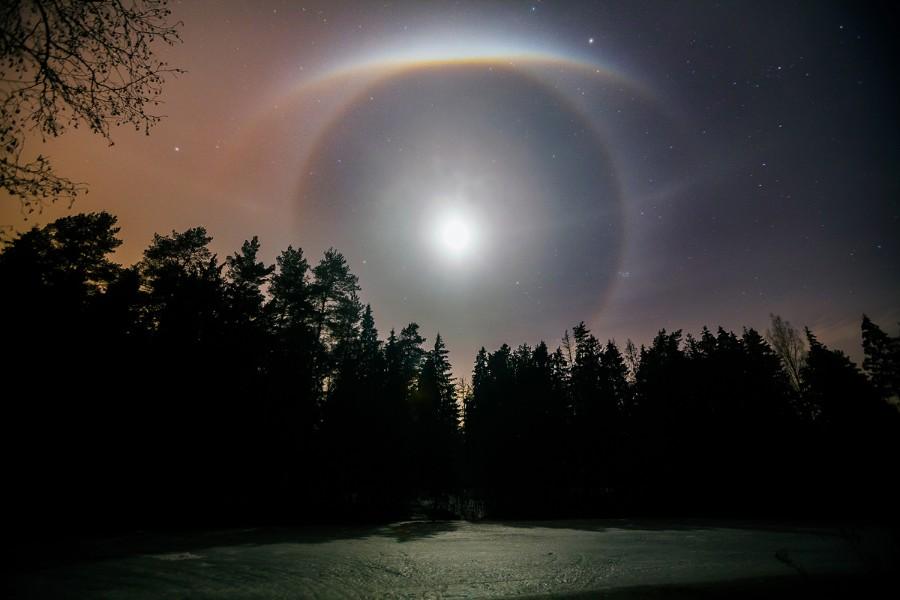
- 6 September - first quarter moon (04:11am)
- 14 September - full moon (05:33am)
- 22 September - last quarter moon (03:41am)
- 28 September - new moon (07:26pm)
Stargazing tips
- When looking at faint objects such as stars, nebulae, the Milky Way and other galaxies it is important to allow your eyes to adapt to the dark – so that you can achieve better night vision.
- Allow 15 minutes for your eyes to become sensitive in the dark and remember not to look at your mobile phone or any other bright device when stargazing.
- If you’re using a star app on your phone then switch on the red night vision mode.
- Need a stargazing telescope or binoculars? Check out our range of high quality observing equipment recommended by Royal Observatory astronomers.
See our range of observing equipment
Share your astronomy pictures
Congratulations to Luke Moseley for his beautiful image of the night sky. He shared his image on our astrophotography Facebook page and we chose it for September's banner image.
If you want to be in with a chance to showcase your astrophotography skills on the banner of next month's night sky blog, share your photos via our Royal Observatory Astrophotography Facebook group
You can also connect with us on Twitter: @ROGAstronomers
Marvellous Moons Exhibition
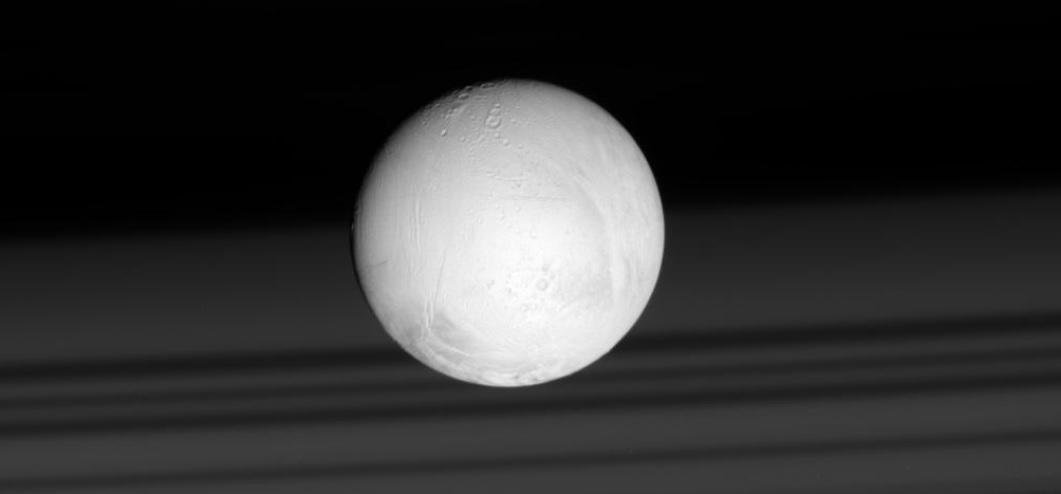
Come and see spectacular images of the amazing moons in our solar system and learn more about them in our free exhibition at the Royal Observatory Greenwich.
The exhibition is open daily until 20 March 2020.
See more of the night sky
Come on an amazing tour of this month's night sky in our Sky Tonight planetarium show delivered live by a Royal Observatory Greenwich astronomer.
See the Sky Tonight planetarium show
Central image: © Luke Moseley
Resources for teachers and students
The Royal Observatory learning team has also created
- Free animated videos that answer the biggest questions in astronomy and free resources to go alongside them.
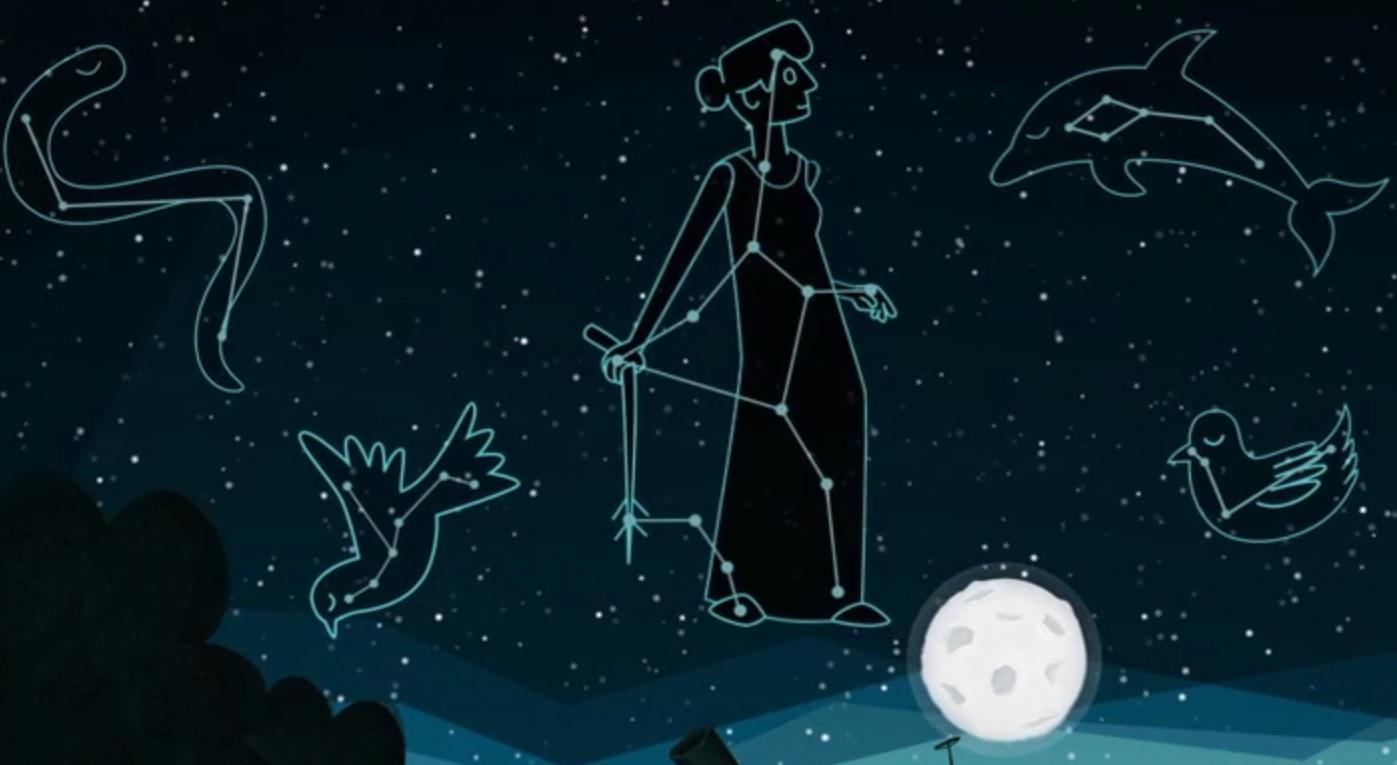
- A whole host of podcasts featuring interviews with real space scientists, astronauts and active researchers working in UK universities.
